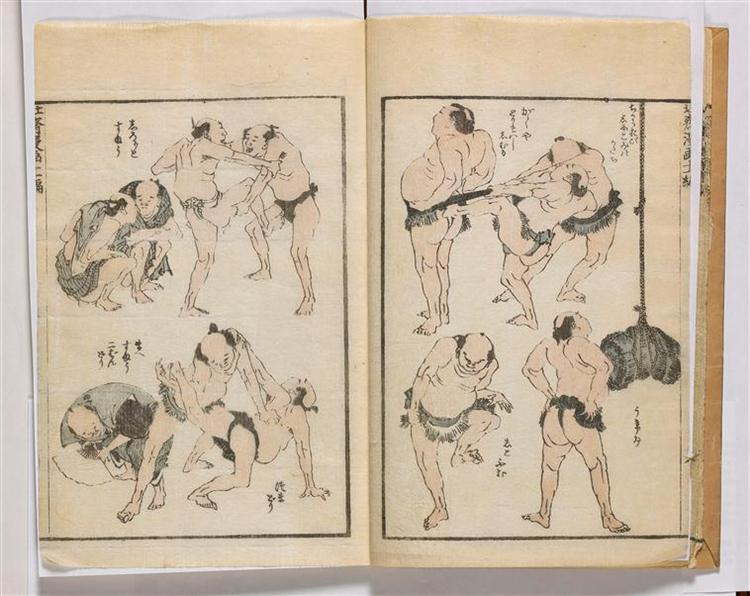Descrizione
Katsushika Hokusai, a monumental figure of Japanese ukiyo-e, created a singular work that embodies the essence of his artistic style and his prodigious ability to capture various aspects of life and nature. The painting titled "Manga" stands as a vibrant testament to his creative genius, combining technical meticulousness with a dynamic and almost playful approach to representation. Through his numerous illustrations, Hokusai explored themes ranging from flora and fauna to scenes of everyday life, endowing his works with an almost instructive character, while at the same time unleashing an undeniable visual amazement.
In “Manga,” elements that are characteristic of Hokusai’s style are evident: a skillful use of line, where each stroke seems to take on a life of its own, and a color palette that, while following the principles of ukiyo-e, suggests a vibrant simplicity. A notable feature of the work is its composition, which is replete with meticulously drawn details. Each figure, each element in the painting is articulated within this two-dimensional space, suggesting a profound sense of aesthetics despite its apparent simplicity. The arrangement of the elements reflects a mastery of balance and harmony that are crucial in Japanese art.
Hokusai was not only a master of color, but he also knew how to create a visual narrative through his images. Although "Manga" is not a work that promises a linear narrative, the multiplicity of its figures and scenes suggests history and movement, providing a sense of immediacy and connection with the viewer. The inclusion of characters that are often symbols of Japanese popular culture provides a window into life in the Edo period. In the work, these characters find themselves in dynamic environments that reflect both nature and urban life, taking the viewer into an immersion in the diversity of existence.
It is also intriguing to think about the historical context of the work. “Manga” is part of a series of works that Hokusai introduced to the world, coinciding with a period of great effervescence in the Japanese arts. The term “manga” itself can be translated as “whimsical drawings” which captures the irreverent casualness of Hokusai’s style, while denoting a formalization of Japanese painting style that would influence generations of artists, both in Japan and internationally.
Although Manga is not a gigantic work like some of his famous prints of waves or mountains, its significance lies in its ability to encapsulate a rich and complex visual experience in a more intimate format. Hokusai's ability to vermiculate movement, emotion and human nature is displayed in each of his strokes, making this work an iconic representation of an art that has endured throughout the centuries. In an age where contemporary manga has taken a central place in global popular culture, it is fascinating to contemplate how Hokusai paved the way for what would become a worldwide artistic phenomenon.
In short, "Manga" not only offers us a glimpse into a bygone era, but acts as a bridge to our own perceptions of aesthetics, art, and visual narrative. Hokusai's work, in its intertwined simplicity and complexity, stands as an immense contribution to the art world, reflecting not only his technical prowess, but also his deep connection to the human being and the nature that surrounds him.
KUADROS ©, a famous painting on your wall.
Hand-made oil painting reproductions, with the quality of professional artists and the distinctive seal of KUADROS ©.
Painting reproduction service with satisfaction guarantee. If you are not completely satisfied with the replica of your painting, we will refund 100% of your money.

